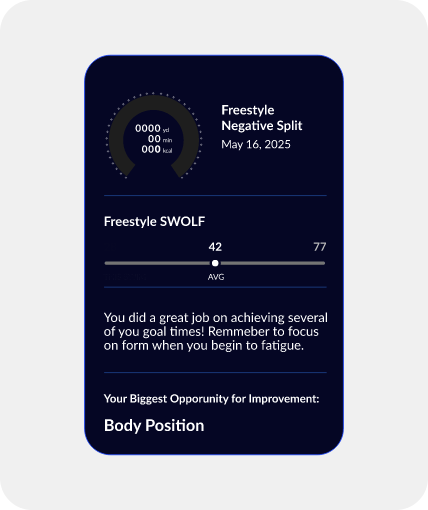Hi, I’m Gisella!
I help companies build products people love
Designing for startups—whether launching a new concept or refining a feature—is challenging. Designing for B2C is even more difficult: customers let you know immediately if they love the product or not. That kind of feedback loop means wearing many hats, moving fast, and learning to adapt quickly. Over time, resilience is built, and instincts are sharpened. Creating great products requires more than just visual design—it takes strong product thinking, a growth mindset, and a deep understanding of the customer.
PLATFROMS
Web, Desktop, iOS, Android, Apple watch and Garmin
DESIGN TOOLS
Figma, Rive, Adobe Creative Suite, Dovetail
COMPANY OVERVIEW
MySwimPro
MySwimPro is the #1 fitness app for swimmers in the world!
Through AI-driven personalized training plans, guided workouts, technique videos, and in-depth analytics, MySwimPro delivers a smarter way to train.
As the sole product designer at MySwimPro, I had to think creatively, make tough calls, and continuously refine every detail.
*All the following metrics were sourced by MySwimPro’s CTO and VP of Engineering via Amplitude—because when it comes to data, I know when to hand the mic to the experts. I love a good deep-dive myself, but in this case, I let them work their magic.
From 57% to 67% in Trial Conversion – Helping Members Reach Their “Aha” Moment with Test Sets
Many new swimmers were dropping off during their free trial—missing out on experiencing the value of a personalized coaching plan. It was identified that without initially capturing a swimmer’s accurate time, the AI couldn’t generate relevant recommendations.
I designed a “Test Set” experience as the first workout—guiding members to log a benchmark swim in-app, immediately triggering tailored workouts.
This simple UX change led to a 10% increase in trial conversion and helped members reach their first “aha moment” within the first 7 days.
Personalizing the Swim Experience with AI Coaching
Swimmers wanted more than just generic workouts—they craved the motivation and guidance of a real coach. But with a lean team and a global user base, it wasn’t feasible to scale live coaching across time zones.
I led the design of AI-powered coaching features that delivered personalized training plans, adaptive feedback, and provided a sense of progress through weekly goals and performance summaries.
The result? A 3% lift in Guided Workout engagement, 155,000+ feedback summaries delivered, and a 2x increase in navigation views, signaling stronger feature discoverability and usage.
Unifying MySwimPro with a Scalable Design System
MySwimPro’s product and marketing teams were operating with differing visual languages, leading to fragmented brand perception and duplicated design efforts. Developers were rebuilding components, and the UI felt inconsistent and outdated.
I led the creation of MySwimPro’s first design system and UI kit—partnering closely with the engineering, product, and marketing teams to unify branding, streamline component usage, and improve cross-functional alignment.
The result achieved a 93% engineering predictability rate, cut delivery times to 7-day cycles, and increased confidence in both deployment and recovery across teams.
40% of new members were exploring the app before completing their first guided workout. This was leading to confusion, since many screens rely on a user’s swim history to display meaningful content.
I proposed a UX pattern that temporarily locked those screens for new members and added prominent CTAs guiding them to their first guided workout.
In the first A/B test, the variant underperformed. I dug into the results and discovered it had been sent to all users instead of only new users. I advocated for a corrected test, targeted only at new members—which revealed a 42% increase in Guided Workout engagement and a faster path to the “aha” moment.
A FEW THINGS I’VE LEARNED ALONG THE WAY.
Spend time with your members on a weekly basis. If you don’t you could end up building a feature your members might not want.
Stay hyper focused on the opportunity you're creating. Setting S.M.A.R.T. goals that help grow the product is a great way not to lose sight of what you’re trying to build.
Learn to be okay with being uncomfortable.
Everyone will give feedback on what you design. It’s not a reflection of who you are.




































